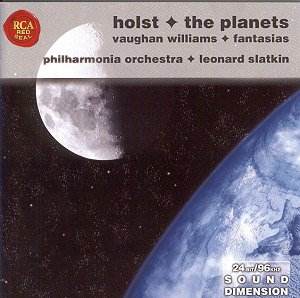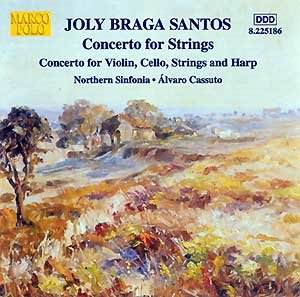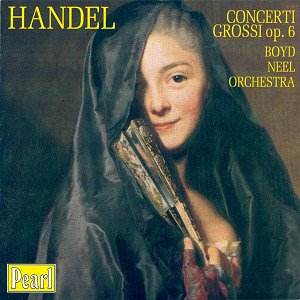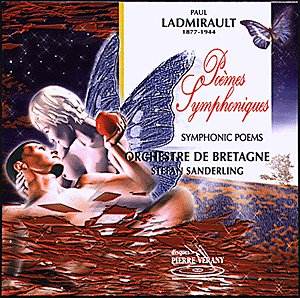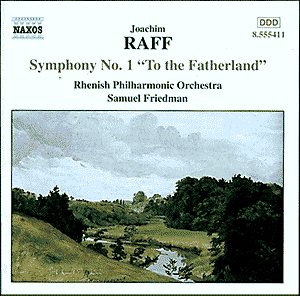 Composer: Joachim Raff
Composer: Joachim Raff
Works: Symphony No. 1 in D major, Opus 96 “To the Fatherland”
Performers: Rhenish Philharmonic Orchestra/Samuel Friedman
Recording: NAXOS 8.555411
Label: NAXOS
Joachim Raff (1822-1882) occupies a fascinating yet often overlooked niche in the pantheon of Romantic composers. While his contemporaries like Brahms and Wagner garnered the lion’s share of attention, Raff’s Symphony No. 1 in D major, subtitled “To the Fatherland,” emerges as a substantial work, reflecting both his artistic lineage and nationalistic fervor. Completed in 1861, this symphony is a testament to Raff’s development alongside the Neo-German school, wherein the influences of Mendelssohn and Wagner converge, establishing a unique identity marked by lyrical expressiveness and structural integrity.
The Rhenish Philharmonic Orchestra, under the baton of Samuel Friedman, engages with this symphony’s thematic ambitions with commendable clarity and energy. From the outset, the opening Allegro buzzes with optimism, as brisk string passages intertwine with bold horn statements, evoking a sense of expansive German landscapes. The work’s development section reveals Raff’s contrapuntal prowess, where thematic material is deftly manipulated, reminiscent of Mendelssohn’s own intricate textures. The orchestra’s crisp articulation and vibrant dynamics ensure that the listener is drawn into the unfolding narrative, characterized by both decorum and vigor.
The Scherzo, with its hunting motifs, exhibits a delightful contrast between the exuberance of nature and the pastoral tranquility suggested by folk-like themes. Here, the horns are particularly notable, painting vivid imagery of the German countryside. Friedman’s interpretation captures the rhythmic vitality inherent in Raff’s score, allowing the listener to traverse the verdant meadows alongside its jubilant inhabitants. A striking feature is the seamless transition from exuberance to lyricism, as the movement ebbs and flows with Raff’s characteristic balance of vigor and introspection.
The Larghetto, a slow movement of profound emotional depth, opens with a theme imbued with romantic yearning. This section offers a glimpse into Raff’s more contemplative side, where the orchestration features an interplay of strings and woodwinds that is both lush and serene. Friedman’s handling of this movement highlights the subtle nuances in dynamics and phrasing, bringing forth a warmth that resonates with the thematic material’s intimate portrayal of home life and familial ties.
The symphony culminates in the Allegro drammatico, a stirring finale that invokes nationalistic fervor through its incorporation of the folk song “Was ist des deutschen Vaterland.” The urgency of the swirling strings and the emphatic brass crescendos create a sense of patriotic fervor, as the movement builds towards a grand assertion of unity and resilience. Friedman’s direction ensures that the orchestral colors are vividly painted, allowing the listener to feel the emotional weight of the music. The final Larghetto sostenuto emerges as a contemplative reflection on the trials faced by the nation, ultimately transitioning to an uplifting resolution that encapsulates Raff’s masterful thematic development.
The recording quality is notably excellent, with Naxos providing a warm acoustic that balances the orchestra’s diverse sections effectively. The engineering captures the nuances of the performance, ensuring that the orchestral textures are rendered with clarity, allowing each instrumental voice to shine. This recording stands favorably against other interpretations, presenting Raff’s symphonic language with a freshness that is often lost in more traditional repertoires.
Raff’s Symphony No. 1 is a work of significant depth and craftsmanship, deserving of its place alongside the more frequently performed symphonic canon. The Rhenish Philharmonic Orchestra’s spirited interpretation, coupled with Naxos’s commendable production values, makes this recording an indispensable addition for those seeking to explore the richness of 19th-century orchestral music. The revival of Raff’s oeuvre through such recordings not only honors his contributions but also enriches our understanding of Romanticism’s broader landscape.
